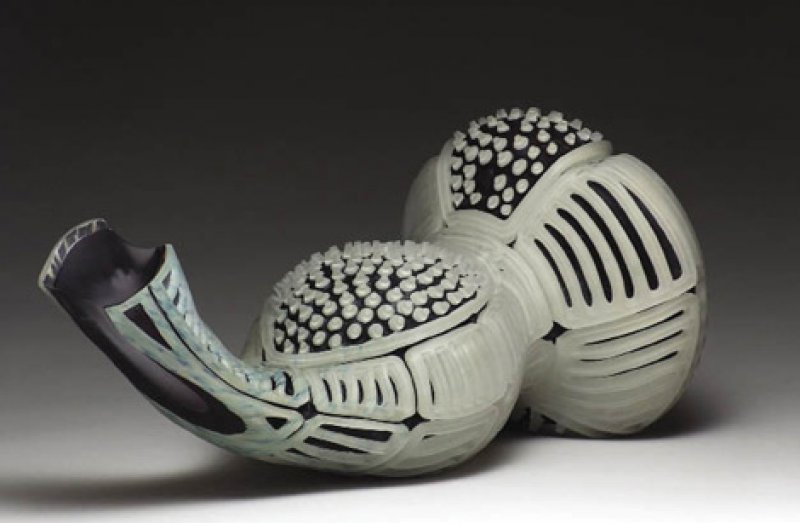Ben Johnson
Ben Johnson:
Inside one of a handful of buildings at Burnsville’s EnergyXchange, light fills a spacious studio, illuminating a rainbow of glass vases, vessels, and bulbous forms stacked high on shelves. Some are transparent, polished, and delicate while others are opaque, heavily textured, and robust. Toward the back of the room, work benches, an assortment of tools, and steel tables are backed by the furnace. Ben Johnson spent the morning texturizing one of his pieces with a sandblaster and now sits poised in the middle of the space he shares with a fellow glassblower.
“Glass is a funny thing. It’ll work for a while, then it’ll crack,” says Johnson, who has spent the past nine years learning the inner workings of shaping the viscous, and sometimes unpredictable, material. The Indiana native was first exposed to glassblowing at age 18 when he made regular visits to the Indianapolis Arts Center. He passionately explored the medium, studying at Kent State University, Corning Museum of Glass in New York, Pilchuck Glass School in Washington, and even trained in Italy. He’s apprenticed under acclaimed gaffers and taught workshops, including one at Penland School of Crafts. A grant from a local arts organization provided the necessary funding to come to North Carolina and focus solely on his art.
Johnson also makes functional glass, but it’s a means to fund the work he finds most engaging—sculpture. He produces series that speak to natural occurrences and environmental pressures. The Spot series, bulbous orange vases featuring raised circles, are about the human reaction to the sun. And both his Mutation and Host series, globular forms that seem as if they’re frozen in mid transformation, hint at the slow overtaking of organisms. And just as important as concept, are color and texture. Johnson begins each piece by building up three monochromatic layers. Using tools of the trade called resists against a sandblaster, he’s able to produce the raised patterns, exposing underlying colors. “I find that a piece is more interesting with layers of texture,” says Johnson, noting his ceramics background as an influence of that ideology. “It opens the piece up for more interpretations.”
And it’s that curiosity that Johnson expects will keep viewers, and himself, engaged in his work. “Because there are so many endless possibilities of what you can do with glass,” he says, “I’ll always keep learning.”
